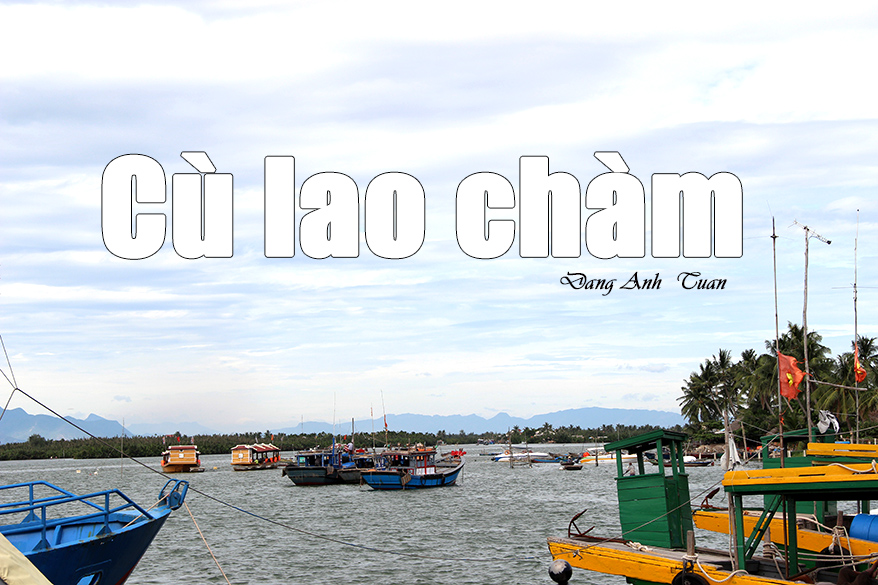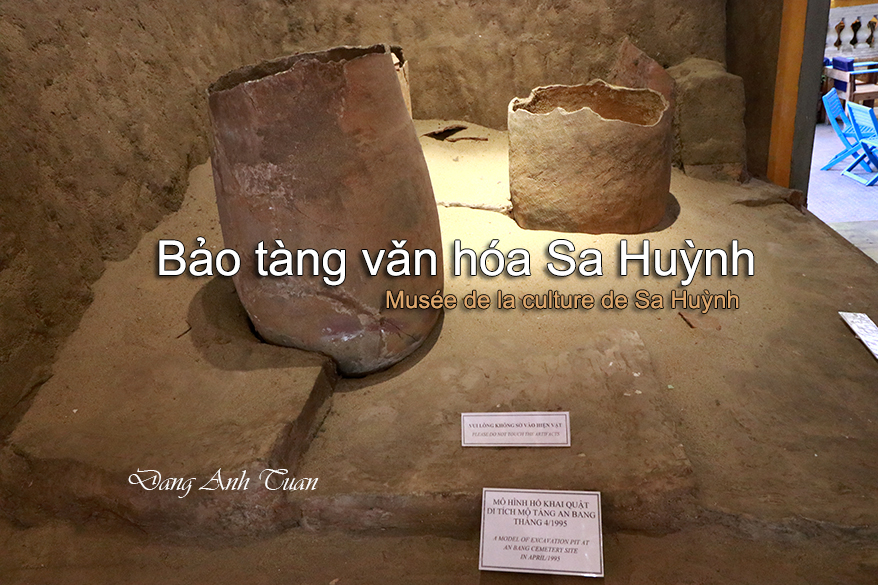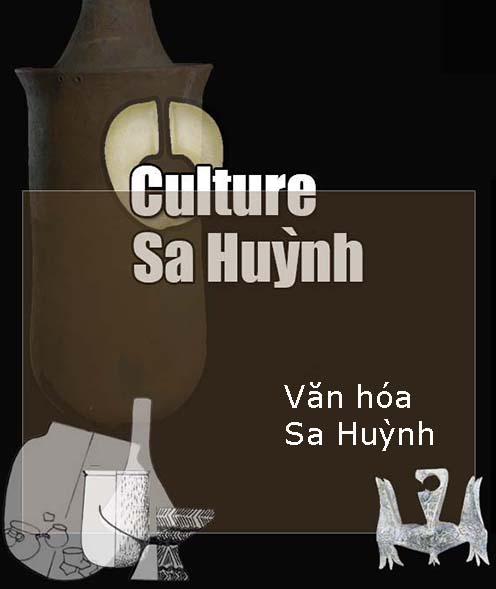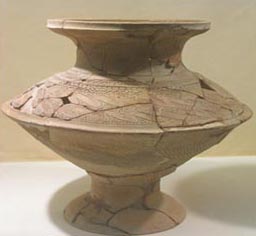
Poulo Cham
Version vietnamienne
English version
Galerie des photos
Située à 18km de l’estuaire du fleuve Thu Bỗn de la vieille ville Hội An, l’île Poulo Cham ou Pulluciampelle (Cù Lao Chàm) par UNESCO comme une réserve de biosphère du monde en 2009. Elle est en fait constituée de huit îlots : Hòn Lao, Hòn Dài, Hòn Mồ, Hòn Khô Mẹ, Hòn Khô con, Hòn Lá, Hòn Tai, Hòn Ông avec une superficie totale de 15 km2. Sa population répartie sur ces îlots est estimée à peu près de 3000 habitants. Autrefois, Poulo Cham était le point de relais destiné aux navigateurs pour pouvoir être approvisionnés en nourriture et en eau dans leur long voyage sur la mer de l’Est et appartenait au royaume du Champa. C’est pourquoi on trouve ici beaucoup d’anciens puits et elle est connue sous le nom de l’île du Champa. De passage dans cette île, le touriste a l’occasion de découvrir un environnement riche et varié non seulement en quantité mais aussi en genre de poissons trouvés dans la zone côtière tropicale de la mer de l’Est à travers un bâtiment d’exposition.
On y trouve aussi une coutume que le chercheur Charles J.C. MacDonald (CNRS Marseille) a considérée comme une caractéristique typique trouvée chez les Vietnamiens vivant le long de la côte du Centre et du Sud Vietnam car les gens du Nord ne l’ont pas eue. C’est le culte de la baleine. Selon certains érudits vietnamiens tels que Thái Văn Kiểm, Trần văn Phước ou Trần Hàm Tấn, ce culte appartenait aux Chams. Lors de l’occupation de leur territoire par les Vietnamiens, ceux-ci n’hésitaient pas à l’adopter comme la déesse Po Nagar à Nha Trang. Mais cette hypothèse n’est pas très convaincante dans la mesure où aucun document n’apporte jusqu’aujourd’hui la certitude sur cette appartenance chame. Selon le père Léopold Cadière, cette coutume n’est pas une exception car les Vietnamiens étaient animistes et polythéistes. C’est dans cette île qu’on découvre un temple dédié au culte de la baleine. Ce mammifère marin est vénéré comme un génie. Selon l’érudit Thái văn Kiểm, sous le règne de l’empereur Gia Long, la baleine reçut un brevet de génie et le titre d’amiral des mers du Sud car l’empereur Gia Long dut sa vie à ce mammifère marin lors d’une noyade. Rien ne contredit pas ce que le chercheur anglais Ruddle Kenneth a remarqué dans son livre: le culte de la baleine renforce la cohésion de la communauté des pêcheurs vietnamiens vivant le long de la côte du centre et du Sud Vietnam. En passant une journée dans cette île, je m’aperçois que les ressources naturelles sont énormes sans parler de la réserve du pétrole. Le Vietnam est désigné souvent par l’expression suivante: Rừng vàng biển bạc pour dire que le Vietnam est gâté par la nature ( » La forêt « dorée » et « la mer « argentée« ). Comment les pêcheurs vietnamiens sont-ils si pauvres et si malheureux ? C’est une question que chacun de nous en tant que Vietnamien se demande la cause de cette tragédie et reconnait qui est le coupable afin d’éviter d’être blâmé par notre conscience et par nos ancêtres.
Version vietnamienne
Cù lao Chàm nằm cách bờ biển Cửa Đại của Hội An 18 cây số. Cù Lao Chàm được UNESCO công nhận là Khu dự trữ sinh quyển thế giới vào năm 2009. Nó gồm 8 đảo: Hòn Lao, Hòn Dài, Hòn Mồ, Hòn Khô Mẹ, Hòn Khô con, Hòn Lá, Hòn Tai, Hòn Ông với tổng diện tích là 15km2. Dân số trên các hòn đảo này gồm khoảng 3.000 người. Thưở xưa, Cù Lao Chàm là nơi dừng chân của các thuyền nhân để tiếp vận lương thực và nước ngọt trong cuộc hành trình trên biển Đông và thuộc về vương quốc Chămpa. Vì vậy mới thấy nơi nầy còn rất nhiều giếng cổ và có tên là cù lao Chàm. Đến đây, du khách sẻ nhận thấy một môi trường phong phú và đa dạng của vùng biển nhiệt đới về số lượng cũng như số loại cá trên biển Đông qua một nhà trưng bày hải sản.
Cũng ở nơi nầy, du khách sẻ khám phá một tập quán mà theo nhà nghiên cứu Charles J.C. MacDonald (CNRS Marseille) là một đặc tính của người Việt ở vùng biến chớ ở miền Bắc thì không có đó là tục lệ thờ cá ông (hay cá voi) nhưng cho đến giờ các nhà học giả Việt như Thái Văn Kiểm, Trần văn Phước hay Trần Hàm Tấn thì nghĩ rằng đây là một tập quán cũa người Chàm mà người Việt tiếp nhận cũng như ở Nha Trang với thánh mẫu Po Nagar nhưng cho đến giờ không có sách vỡ nào chứng minh là thuộc về dân tộc Chàm. Theo cố cả Léopold Cadière thì đúng hơn là người dân Việt theo thuyết duy linh và đa thần nên chuyện thờ cá ông cũng không ngoại lệ. Ở cù lao chàm có một đền thờ cá ông hẳn hòi. Người dân Việt kính nể cá ông như cha mẹ và thần thánh. Theo lời nhà học giả Thái văn Kiểm, dưới thời vua Gia Long, cá ông được chứng chỉ sắc phong làm thống chế của các biển phía nam vì cá ông đã giúp vua Gia Long thoát chết đuối. Cũng có phần đúng với sự nhận xét của học giả Anh Quốc Ruddle Kenneth như sau: chuyện thờ cúng cá ông cũng là một thể thức nhẳm cố liên kết chặt chẻ các ngư dân Việt sống ở vủng biển. Đến đây mới thấy tài nguyên cũa đất nước rất lớn ở biển Đông với bao nhiêu loại tìm thấy trong hải sản chưa nói đến dầu lửa. Rừng vàng biển bạc dùng để ám chỉ đất nước Việt Nam của chúng ta. Thế mà ngư dân Việt vẫn khốn đốn nghèo khổ.? Câu hỏi nầy mỗi nguời Việt chúng ta tự hỏi lòng mình từ đâu, tự nhân diện nó là ai để khỏi hổ thẹn với lương tâm và ông cha của chúng ta.
Tàl liệu tham khảo
Charles J. H. MacDonald: Le culte de la baleine, une exception vietnamienne
Trần văn Phước: Chronique: Funérailles d’une baleine . Bulletin de la Société des Etudes indochinoises, tome XLIX, no2, 1974, p 273-282
Thái Văn Kiểm: Le culte de la baleine . Bulletin de la Société des Etudes indochinoises, tome XLIX, no2, p 311-326
Ruddle Kenneth : Traditional community based coastal marine fisheries management in Vietnam . Ocean and Coastal management, Elsevier Science Ltd, 40, p 1-22
Cadière Léopold: Croyances et pratiques religieuses. Tomes I et II. Saigon, Imprimerie nouvelle d’Extrême Orient 1955-1958
Picture Gallery
Located 18 km from the estuary of the Thu Bồn River in the old town of Hội An, Poulo Cham Island or Pulluciampelle (Cù Lao Chàm) was recognized by UNESCO as a world biosphere reserve in 2009. It actually consists of eight islets: Hòn Lao, Hòn Dài, Hòn Mồ, Hòn Khô Mẹ, Hòn Khô Con, Hòn Lá, Hòn Tai, and Hòn Ông, with a total area of 15 km². Its population spread across these islets is estimated to be about 3,000 inhabitants. In the past, Poulo Cham was a relay point for navigators to be supplied with food and water during their long journey on the East Sea and belonged to the Champa kingdom. This is why many ancient wells are found here, and it is known as the Island of Champa. Visitors passing through this island have the opportunity to discover a rich and varied environment, not only in the quantity but also in the variety of fish found in the tropical coastal zone of the East Sea through an exhibition building.
There is also a custom that the researcher Charles J.C. MacDonald (CNRS Marseille) considered a typical characteristic found among the Vietnamese living along the coast of Central and Southern Vietnam, as the people of the North did not have it. It is the whale cult. According to certain Vietnamese scholars such as Thái Văn Kiểm, Trần Văn Phước, or Trần Hàm Tấn, this cult belonged to the Chams. During the occupation of their territory by the Vietnamese, they did not hesitate to adopt it, like the goddess Po Nagar in Nha Trang. But this hypothesis is not very convincing since no document to date provides certainty about this Cham affiliation. According to Father Léopold Cadière, this custom is not an exception because the Vietnamese were animists and polytheists. It is on this island that one discovers a temple dedicated to the whale cult. This marine mammal is revered as a spirit. According to the scholar Thái Văn Kiểm, under the reign of Emperor Gia Long, the whale received a spirit patent and the title of admiral of the Southern seas because Emperor Gia Long owed his life to this marine mammal during a drowning incident. Nothing contradicts what the English researcher Ruddle Kenneth noted in his book: the whale cult strengthens the cohesion of the community of Vietnamese fishermen living along the coast of Central and Southern Vietnam.
Spending a day on this island, I realize that the natural resources are enormous, not to mention the oil reserves. Vietnam is often referred to by the following expression: Rừng vàng biển bạc, meaning that Vietnam is blessed by nature (« the golden forest » and « the silver sea »). How are Vietnamese fishermen so poor and so unhappy? This is a question that each of us, as Vietnamese, asks ourselves to understand the cause of this tragedy and to recognize who is to blame in order to avoid being condemned by our conscience and by our ancestors.
[Return to CHAMPA]






